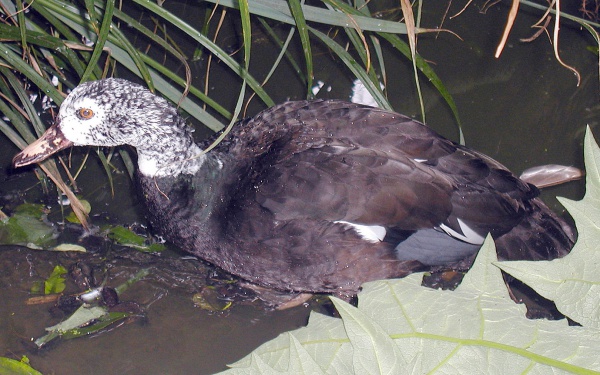Facts About White-winged duck
The white-winged duck, also known as the white-winged wood duck, is a captivating and sizeable species. Initially believed to belong to the genus Cairina and categorized with dabbling ducks, recent genetic studies suggest it may be more closely related to the diving duck, the Redhead (Aythya americana), potentially warranting its classification in a separate genus, Asarcornis scutulata. This duck is distinguished by its impressive size; males typically weigh between 2.94 and 3.9 kg, while females range from 1.95 to 3.05 kg. Adult ducks can easily be identified by their dark bodies, white heads and necks, and distinctive white wing-coverts.
A nocturnal and secretive feeder, the white-winged duck's diet consists of seeds, aquatic plants, grains, rice, snails, small fish, and insects. These ducks prefer wetlands adjacent to forests, where they roost and nest in tree cavities. Historically, their range extended from northeast India to Sumatra. Unfortunately, their population has significantly declined, and they are now endangered, with approximately 800 individuals remaining in countries such as Laos, Thailand, Vietnam, Cambodia, India, Bangladesh, and Myanmar.
In India, several key protected areas serve as sanctuaries for the white-winged duck. These include Dibru-Saikhowa National Park, Dihing-Patkai Wildlife Sanctuary, Nameri National Park, and Namdapha National Park. The species faces numerous threats, including habitat loss, the destruction of nesting sites, hunting, and the collection of eggs and chicks. Due to these challenges, the white-winged duck is listed as Endangered on the IUCN Red List and is protected under Appendix I of CITES.
In central Sumatra, these ducks have adapted to life in peatland acacia plantations, which provide suitable habitats between harvests. They often frequent canals shaded by overhanging acacia trees, which offer essential cover. As the state bird of Assam, the white-winged duck's survival is critical, and ongoing conservation efforts are vital to protect this unique and endangered species.

 Laos
Laos